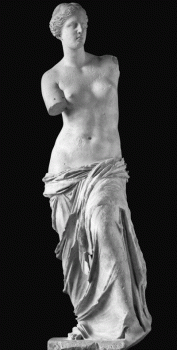American Journal of Archaeology | The Journal of the Archaeological Institute of America
You are here
Creating the Past: The Vénus de Milo and the Hellenistic Reception of Classical Greece
April 2005 (109.2)
Creating the Past: The Vénus de Milo and the Hellenistic Reception of Classical Greece
This article reexamines the well-known Hellenistic statue of Aphrodite from Melos (the Vénus de Milo), drawing on recently published archaeological evidence and archival sources relating to its excavation to propose a new reconstruction of the sculpture's original appearance, context, and audience. Although scholars have often discussed the statue as a timeless ideal of female beauty, the Aphrodite was in fact carefully adapted to its contemporary setting, the minor Hellenistic polis of Melos. With its conservative yet creative visual effect, the sculpture offers a well-preserved early example of the Hellenistic emulation of classical art, and opens a window onto the rarely examined world of a traditional Greek city during a period of dynamic change. The statue, it is argued, was set up within the civic gymnasium of Melos. Furthermore, Aphrodite likely held out an apple in token of her victory in the Judgment of Paris, as newly accessible sculptural fragments found with the statue demonstrate. The sculpture responds to and transforms both classical visual prototypes and earlier narratives of the Judgment, familiar to Greek audiences from the period of Homer onward. And the Aphrodite not only was appropriate for display within a gymnasium but indeed exemplifies a critical aspect of that institution's role during the Hellenistic period: the creation of a standardized and highly selective vision of the past to serve as a model for the present. Thus the statue, analyzed within its original context, greatly enhances our understanding of the reception of classical sculpture and mythological narrative in Hellenistic Greece.
Creating the Past: The Vénus de Milo and the Hellenistic Reception of Classical Greece
By Rachel Kousser
American Journal of Archaeology Vol. 109, No. 2 (April 2005), pp. 227–250
DOI: 10.3764/aja.109.2.227
© 2005 Archaeological Institute of America


